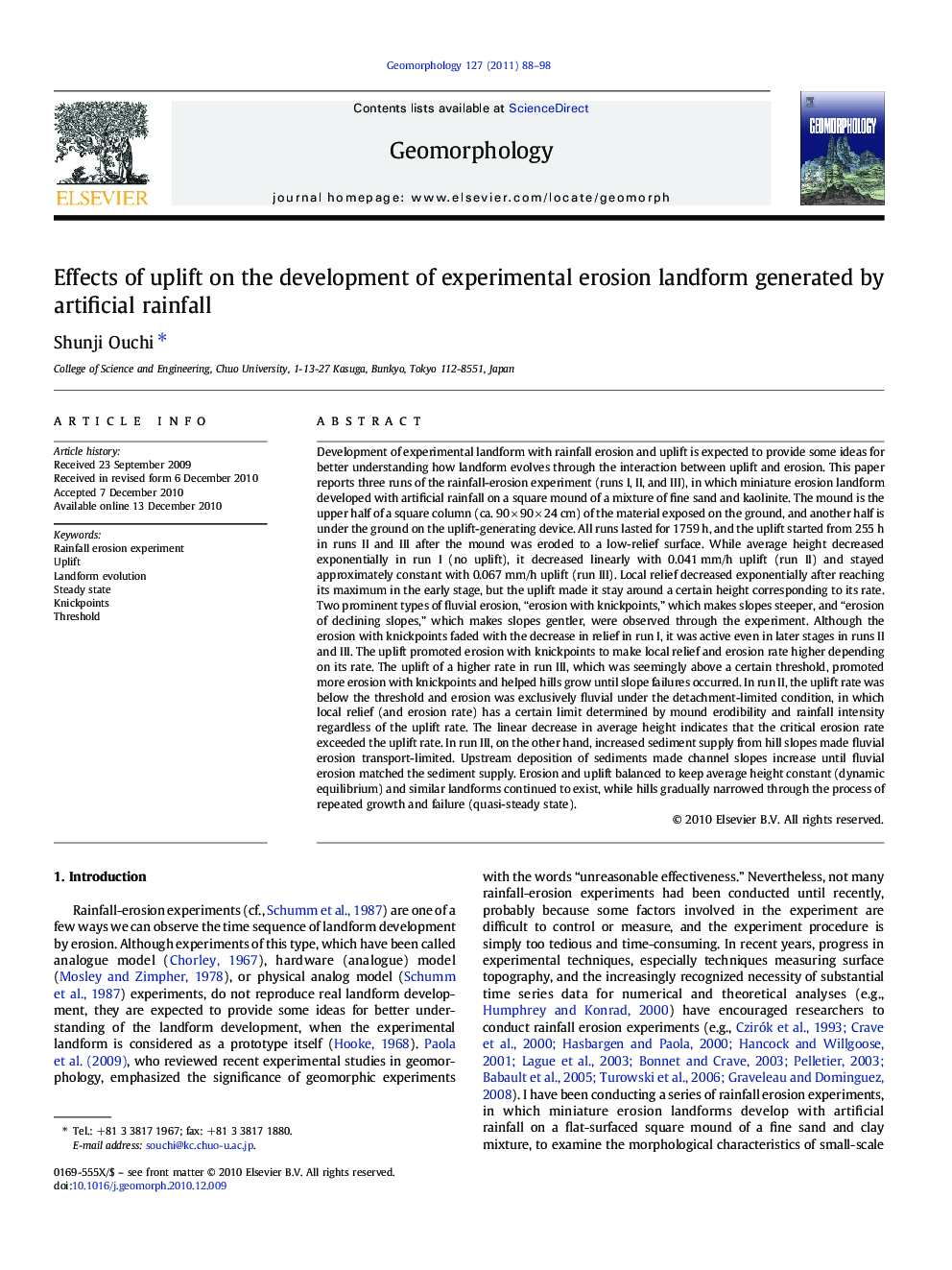| کد مقاله | کد نشریه | سال انتشار | مقاله انگلیسی | نسخه تمام متن |
|---|---|---|---|---|
| 4685712 | 1635507 | 2011 | 11 صفحه PDF | دانلود رایگان |

Development of experimental landform with rainfall erosion and uplift is expected to provide some ideas for better understanding how landform evolves through the interaction between uplift and erosion. This paper reports three runs of the rainfall-erosion experiment (runs I, II, and III), in which miniature erosion landform developed with artificial rainfall on a square mound of a mixture of fine sand and kaolinite. The mound is the upper half of a square column (ca. 90 × 90 × 24 cm) of the material exposed on the ground, and another half is under the ground on the uplift-generating device. All runs lasted for 1759 h, and the uplift started from 255 h in runs II and III after the mound was eroded to a low-relief surface. While average height decreased exponentially in run I (no uplift), it decreased linearly with 0.041 mm/h uplift (run II) and stayed approximately constant with 0.067 mm/h uplift (run III). Local relief decreased exponentially after reaching its maximum in the early stage, but the uplift made it stay around a certain height corresponding to its rate. Two prominent types of fluvial erosion, “erosion with knickpoints,” which makes slopes steeper, and “erosion of declining slopes,” which makes slopes gentler, were observed through the experiment. Although the erosion with knickpoints faded with the decrease in relief in run I, it was active even in later stages in runs II and III. The uplift promoted erosion with knickpoints to make local relief and erosion rate higher depending on its rate. The uplift of a higher rate in run III, which was seemingly above a certain threshold, promoted more erosion with knickpoints and helped hills grow until slope failures occurred. In run II, the uplift rate was below the threshold and erosion was exclusively fluvial under the detachment-limited condition, in which local relief (and erosion rate) has a certain limit determined by mound erodibility and rainfall intensity regardless of the uplift rate. The linear decrease in average height indicates that the critical erosion rate exceeded the uplift rate. In run III, on the other hand, increased sediment supply from hill slopes made fluvial erosion transport-limited. Upstream deposition of sediments made channel slopes increase until fluvial erosion matched the sediment supply. Erosion and uplift balanced to keep average height constant (dynamic equilibrium) and similar landforms continued to exist, while hills gradually narrowed through the process of repeated growth and failure (quasi-steady state).
Journal: Geomorphology - Volume 127, Issues 1–2, 1 April 2011, Pages 88–98